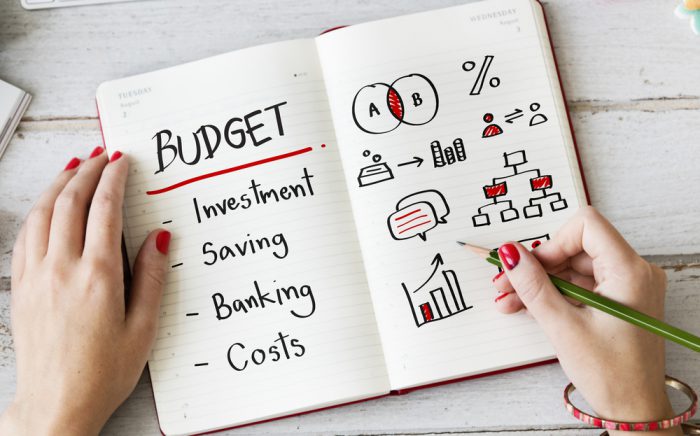Table of Contents
Saving money in your 20s is no easy feat. From rent, food, bills, and your social life, expenses eat at your paycheck on a daily basis. And, of course, there’s always a need to present yourself well for job interviews and keep up with dress codes at work. It doesn’t matter that you’re “trying to make it” in your 20s, the world still expects you to look sharp.
All that costs money!
So, you need to look for ways to save when you’re shopping. That way once you have weighed the pros and cons between eating at home vs. eating out on a Friday evening, and have come to the conclusion to hit the town with your pals, you’ll be confident in the outfit you show up in. This guide will walk you through some of the best hacks and secrets for where to shop in your 20s—and beyond!
But let’s be real: when we say shopping, we usually mean shopping for clothes.
Where To Shop for Clothes in Your 20s?
Overall, you should look for stores and marketplaces that offer great value. You want clothes that look and feel great but don’t cost half your paycheck for a single item.
There are five main categories of shopping that can help you find great deals on anything from workwear to athleisure:
- Fast fashion brands
- Outlets and factories
- Overstock stores
- Secondhand shops
- Online retailers
Now, let’s take a closer look at each category.
Fast Fashion is your Friend

The easiest way to save a dime while shopping for clothes is to utilize stores that are made to serve that exact need (saving you money!).
Fast fashion retailers offer on-trend clothes at reasonable prices.
Now, you do “get what you pay for,” and some options offered by these retailers can be of lower quality. To keep prices down, fast fashion companies tend to use cheaper materials.
Yet, they also house bargain items, produce clothes that are durable, and can be as trendy as any designer outlet.
Some of the best and most popular fast fashion brands include:
These brands all have their own unique style, but what’s shared between them is a low bar to entry. They can help you achieve the look you want at a price point you can afford in your twenties.
Outlets Factory Stores, and Discount Racks
At price tiers beyond these fast fashion staples, there are brands that offer slightly higher quality goods—but often at a steep increase in price.
However, it’s worth noting that many expensive brands also offer affordable options in dedicated outlets or “factory” stores. For example, J. Crew’s classic American aesthetic can cost a pretty penny, but prices at J. Crew Factory can be comparable to those at the stores listed above. If you love the sleek, sophisticated look of Banana Republic, you may be able to find a similar garment at its Factory store or even its cheaper sister-store, the GAP.
The same goes for big-box and department stores. While the offerings at a store like Nordstrom might be outside your budget, Nordstrom Rack carries great value finds in your price range.
Hunt for Bargains in Discount and Overstock Stores
Closely related to brand-specific outlets, discount or overstock stores offer great prices on goods you’d pay more for at traditional retailers.
They’re basically bargain department stores.
Some of the best discount and overstock stores include:
How does it work?
These stores are stocked with offerings from top name brands that, for whatever reason, didn’t sell well in other stores. That means they may be out of season or have slight defects. Typically, these details are invisible to the untrained eye.
What is evident is the major savings on wardrobe essentials, often at or above 50% of the original price.
Want to dress designer at a discount? Shop at these favorite stores.
Shop Second Hand: Thrift, Consignment, and Vintage

Arguably the most ethical option to save money while shopping is buying second hand.
Buying second hand allows you to save significantly on clothes with little wear and tear. It also helps the environment, as clothes are recycled rather than trashed. Additionally, shopping at thrift stores is a great way to shake up your overall personal style by picking up unique garments and accessories you can’t find anywhere else.
Some of the best thrift, consignment, and vintage stores include:
These stores keep quality clothes out of the landfills. Plus, you might find a great, classic garment that’s gone forever out of season.
Use Online Retailers and Marketplaces
Finally, another great way to save while shopping for your curated closet is to skip the trip to the store and shop from the comfort of your home.
Why?
Online retailers and marketplaces can sometimes be the most economical way to purchase quality wardrobe essentials.
Some great places to shop online include:
- Amazon – (Find Amazon deals)
- Ebay
- Etsy
- Stein Mart – (Find a Stein Mart coupon code)
Another benefit is that you avoid marketing tactics that brick and mortar stores use to get you to spend over your budget. There are no salespeople attempting to upsell you into the more expensive options, nor tricky markdowns that entice you to spend in order to save.
Plus, when shopping online, there are many tools you can use to maximize savings, like deals, rebates, and special offers aggregated by sites like RebateKey. Our unique tools enable you to save money on clothes (and many other things) no matter where you buy them.
But where you shop isn’t the only key factor in saving money.
How Should I Dress in My 20s?
Another way to save money on shopping is hacking your wardrobe and looking for ways to maximize the efficiency of clothes you already own.
So, with that said, how can you dress to save money?
Think about the kinds of clothes you need, then:
- Prioritize basics and classic pieces
- Avoid overly seasonal items
- Collect timeless staples, not trend pieces
- Seek out garments that serve multiple purposes
When planning out your capsule wardrobe, consider the important questions. Instead of asking yourself “what’s in style right now?,” think about questions like “what’s a timeless look?” Or “what clothes can do double-duty, passing for both a workday and a night out?”—these are your ticket to dressing for savings.
To answer these questions, let’s take a look at the main kinds of clothes you’ll need:
Work Clothes and Accessories
The clothes you need for work may differ depending on your workplace and company culture. That said, many companies have similar dress codes and expected norms.
When shopping for professional attire, some savvy, frugal factors are:
- Neutral colors that work in various settings and combinations
- Sturdier fabrics that can withstand everyday wear and tear
- Modest pieces that can work well together
- Layers, layers, layers!
A great secret about work clothes? It’s much easier to dress-down a work outfit than it is to dress-up most casual wear.
Look for a “business casual” and “smart casual” staple like a nice blazer, and pair it with a plain white button-up shirt. Voila: you have a great outfit for your big meeting and your dinner plans on a Friday night.
Casual, Street, and Lounge Wear

They say life is what happens outside of work, and for good reason!
When thinking about the clothes you wear outside of the workplace, there are fewer rules and regulations to worry about. In fact, all that matters is what you feel your best in! That and what you can afford, of course.
When assembling your collection of casual style options to wear outside of work, you might have several different uses in mind:
- Comfortable loungewear for around the home
- Athletic and workout clothing
- Casual, classic pieces like T-shirts and jeans
- Upscale, fashionable clothes for events or a special occasion
Across these categories, there are ways to get mileage out of individual garments. For instance, many work-appropriate items can be dressed down for casual wear, or even dressed up for special date nights. And athletic wear can double as loungewear, hence the ongoing trend of athleisure.
Be Yourself and Save Where You Can
The most important thing to remember is to be yourself. Buy items that speak to your personal style, and then use them for as many purposes as possible.
Whether you’re shopping at a fast fashion brick and mortar, looking through the catalogue of a big-box retailer, or browsing an online thrift shop’s offerings, always look for sales and discounts to save big in your twenties. It’s also important to note that many starter brands on the market are willing to build relationships with potential brand ambassadors and allow interested consumers to try products for free before committing.
And, once you have all the clothes you need, keep things fresh by switching up outfits regularly.
Even after a piece of clothing has served its purpose, you can look for ways to recycle it. Own a pair of old jeans you’re sick of wearing? You might like them better as shorts. Old novelty and classic T-shirts can be hip as is, or even tie-dyed for a unique aesthetic.
Get the most out of your new and improved capsule wardrobe so you can spend on and save for what really matters!
Sources:
Lists
https://www.collegefashion.net/shopping/top-10-best-stores-for-fashion-on-a-budget/
https://www.buzzfeed.com/marquaysa/the-best-places-places-to-shop-in-your-late-twenties-an
https://www.buzzfeed.com/jessicamisener/places-to-shop-in-your-late-twenties-and-early-th
https://gochicyourself.com/where-to-shop-in-your-late-twenties/
Hyperlinks
https://www2.hm.com/en_us/index.html
https://www.uniqlo.com/us/en/home/
https://www.forever21.com/us/shop
https://bananarepublicfactory.gapfactory.com/
https://www.nordstromrack.com/
https://tjmaxx.tjx.com/store/index.jsp
https://www.marshalls.com/us/store/index.jsp
https://www.youtube.com/watch?v=QK8mJJJvaes
https://www.secondtimearound.net/
https://www.buffaloexchange.com/





